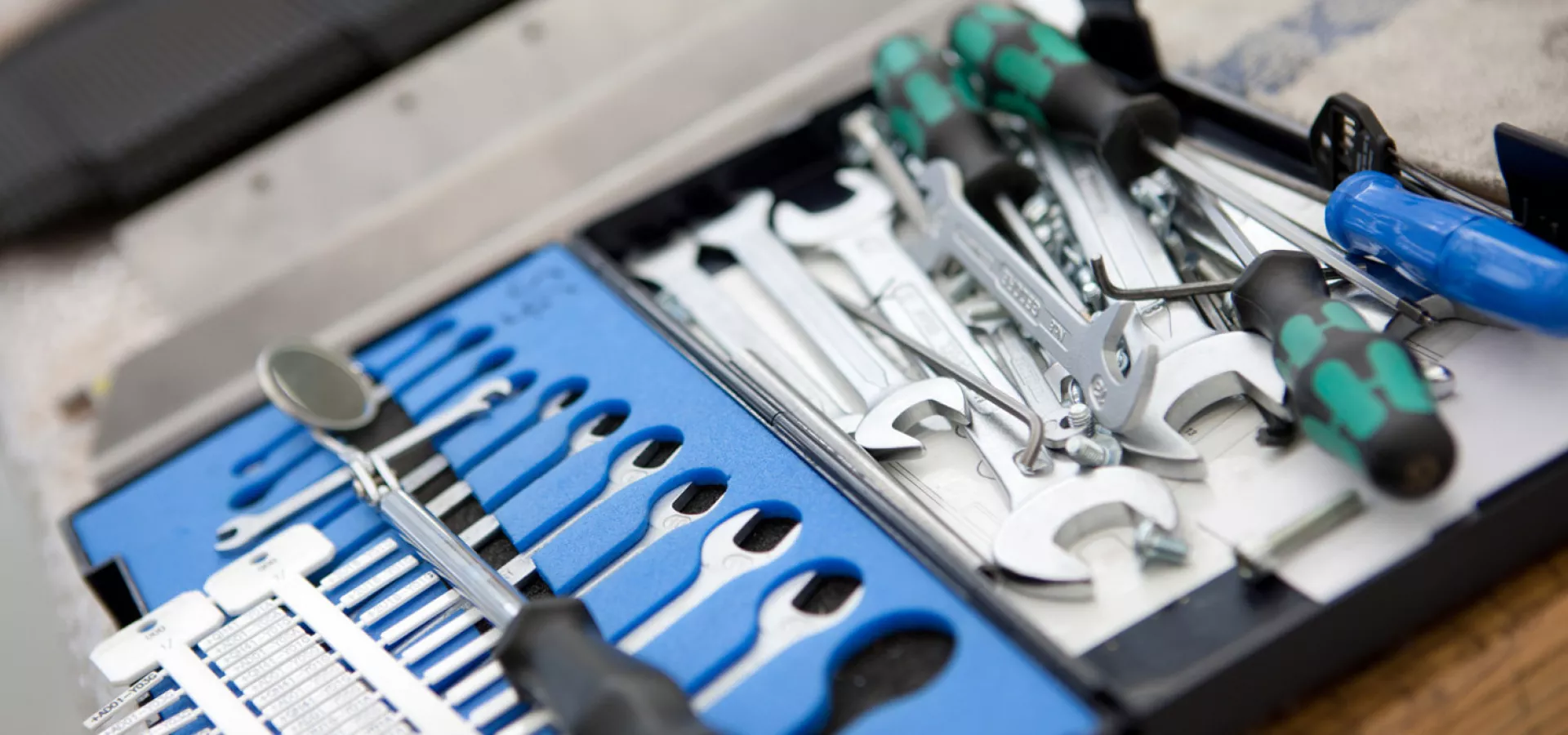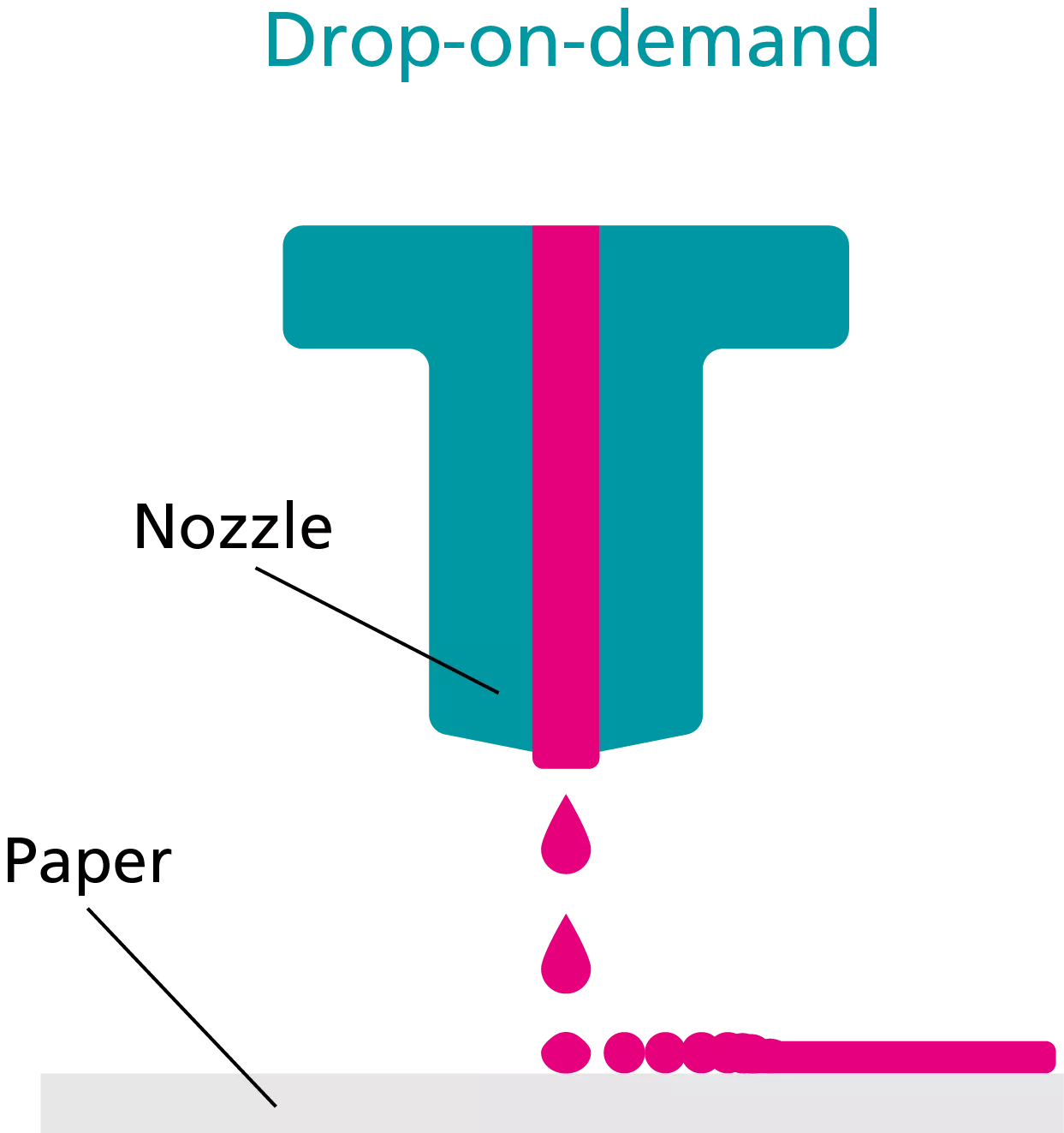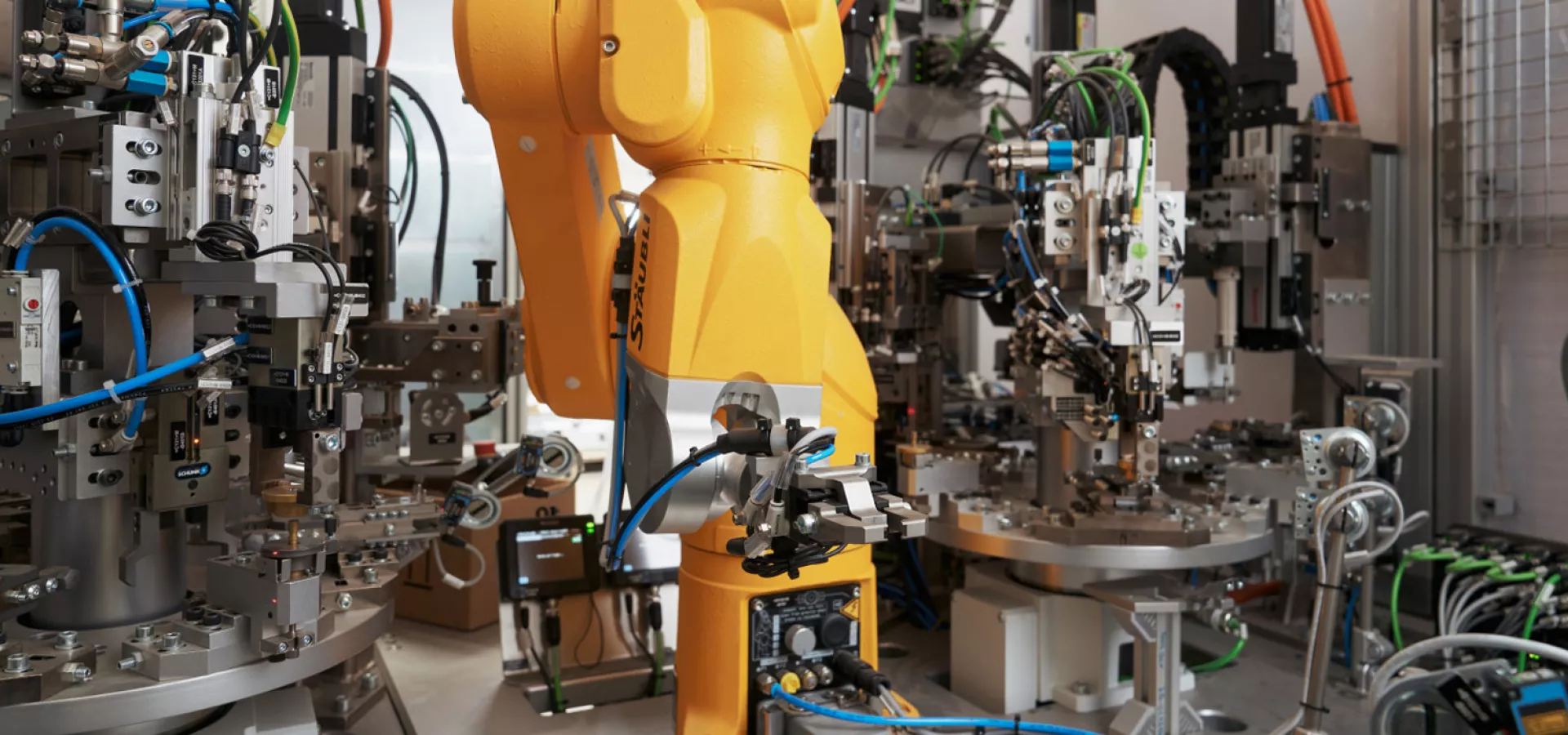
Inkjet - printing without touch
Inkjet is a modern printing process that does not require any contact between a print template and the object to be printed. This means that the inkjet process contrasts, among other things, with thermal transfer, in which contact must be established between the special ink film, the thermal print head and the object to be printed. The inkjet process is part of digital printing systems. This means that the artwork is transferred to the printing unit via computer. This enables fast and uncomplicated changeovers as well as many different printing sequences in succession. The second characteristic feature of inkjet printing is the use of inks: These are sprayed from a nozzle onto the material to be printed, using two different methods.
Continuous inkjet process for particularly fast results
The continuous inkjet process is primarily used in the industrial sector and is primarily used when printing results are to be produced in a continuous flow at high speed. The procedure for this inkjet process is quickly explained: ink drops are continuously sprayed from the nozzles of the inkjet printer. This creates a kind of ink curtain, with each of the drops inside being electrostatically charged. With the aid of high-voltage electrodes located in front of the ink curtain, an electric field is generated in parallel. This electric field enables the electrostatically charged ink drops to be deflected in a controlled manner so that they then hit the substrate in a targeted manner and in accordance with the print specifications.
Drop-on-demand inkjet method for particularly high resolutions
In contrast to the continuous inject process, drop-on-demand inkjet printing focuses primarily on precision rather than speed. Instead of an entire curtain of ink, a drop of ink is only ever injected from the print head when it is actually needed according to the specifications of the print template. With this process, resolutions of 600 dpi can be achieved without any problems. This is why this inkjet process is used not only in industry, but also in private households with classic inkjet printers. However, the difference between industrial inkjet printers and ordinary household printers that use this process is clear: while industrial devices contain several thousand nozzles to achieve maximum throughputs, home printers have only a few nozzles that have to be moved over the substrate several times.

What are the advantages of inkjet printing?
Some of the advantages that inkjet printing has over other processes have already been mentioned. In particular, non-contact printing is one of the great strengths of this process. This makes it possible to print even uneven or pressure-sensitive objects without any complications. Another positive aspect of the inkjet process is its speed and flexibility. Since no changeover is required and no fixed printing form or stencil has to be used, significantly faster and more versatile printing results can be achieved. In contrast to thermal transfer, this also offers advantages in terms of data protection, as no theoretically readable stencils or printing forms remain. Last but not least, printing costs are comparatively low with the inkjet process.


